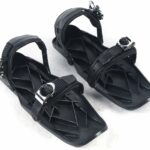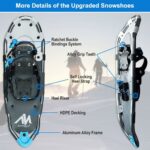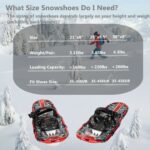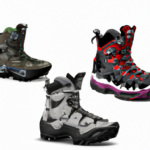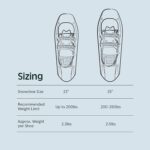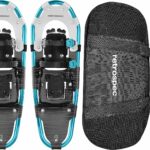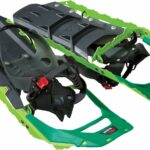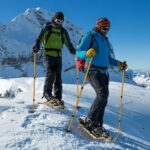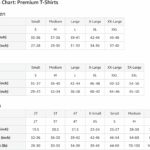Ever wondered how to properly gear up for a snowy adventure? Look no further! Today, we unravel the mystery of what shoes to wear with snowshoes. Spoiler alert – picking the right footwear isn’t only about comfort and warmth, but it can be critical to your safety as well. So let’s explore this icy subject together, ensuring your next trip to the snow-lands is both enjoyable and secure.
Understanding Snowshoes and Their Function
Snowshoeing goes beyond just a recreational winter activity. It’s a masterful blend of design and innovation that has allowed humans to navigate snowy terrains for centuries.
Design and Construction of Snowshoes
Traditionally, snowshoes were made from hearty wood frames and rawhide lacings. However, the unique design of the snowshoe is what made it so effective. The wide surface area helped to distribute the wearer’s weight over a larger portion of the snow, thus preventing them from sinking into deep snow.
Modern snowshoes have evolved significantly from those early designs. They are constructed from lightweight and durable materials like plastic, aluminum, and synthetic fabrics. Some models have crampons or cleats built into the bottom to provide extra stability and traction on icy or hard-packed snow.
Role of Snowshoes in Enhancing Mobility on Snow
By increasing flotation, snowshoes make it far easier for you to traverse snowy terrain. Whether you’re hiking through the backcountry to find untouched snow or walking a well-trodden path, snowshoes can make the journey far less taxing. Without them, your legs would sink into the snow, and it would take considerable energy and strength to move forward.
The Need for Suitable Footwear with Snowshoes
Like with any outdoor activity, using snowshoes requires proper footwear. You need a boot that performs well under the unique conditions snowshoeing presents.
Influence of Footwear on Snowshoe Functionality
The right footwear enhances your mobility, stability, and comfort while wearing snowshoes. Boots should allow for full articulation of the foot, should be suitable for the bindings, and should be capable of protecting from freezing temperatures.
Foot Comfort and Protection Considerations
When choosing footwear for snowshoeing, comfort and protection go hand in hand. The boots need to be comfortable enough for long distances, with proper support and cushioning. They also need to shield your feet from the cold, wet, and potentially sharp objects you might encounter on your trek.
Wearing Hiking Boots with Snowshoes
Hiking boots are a common choice for snowshoers. But, they have their pluses and minuses.
Advantages of Hiking Boots
Their design is inherently versatile and suitable for a variety of outdoor activities, including snowshoeing. They offer good support and stability while ensuring your foot remains comfortably cushioned. Many designs are waterproof, too.
Drawbacks of Using Hiking Boots with Snowshoes
On the minus side, hiking boots often aren’t equipped to handle the freezing temperatures typical of snowshoeing expeditions. Without additional insulation, your feet might get cold quickly. They also may not be compatible with all snowshoe bindings.
Using Insulated Winter Boots with Snowshoes
Insulated winter boots can be a better option for snowshoers who will be facing truly cold weather conditions.
Why Choose Insulated Winter Boots?
They have specially designed layers that act as barriers to cold air, even in sub-zero temperatures. The thick insulation not only keeps your feet warm but also adds comfort and cushioning.
Drawbacks of Using Insulated Winter Boots with Snowshoes
While these boots are excellent at keeping your feet warm, they can be quite heavy. This makes them less than ideal for long treks. Also, bulkier boots might not fit comfortably in all snowshoe bindings.
Wearing Waterproof Boots with Snowshoes
Another option to consider is waterproof boots. There are many advantages to this type of footwear.
Benefits of Waterproof Boots
Waterproof boots are built to keep your feet dry in all conditions. When you’re trudging through snow, your boots are bound to get wet, so waterproofing is highly valuable. It also helps maintain warmth by keeping moisture out.
Challenges of Using Waterproof Boots with Snowshoes
Despite their benefits, waterproof boots can suffer from breathability issues. If your boots don’t allow moisture to escape, your feet can end up getting uncomfortably wet from sweat.
The Use of Trail Running Shoes with Snowshoes
Snowshoe racers or those who prefer a lighter, more athletic boot might opt for trail running shoes.
Why Trail Running Shoes Can be a Good Option
These shoes are light, breathable, and designed for mobility, which is perfect for those who are snowshoeing on packed trails or racing. Their flexible design is also advantageous when using running-style snowshoes.
Potential Issues with using Trail Running Shoes
Trail running shoes are features-packed but not typically insulated. They’re also usually not fully waterproof, which could be problematic in deep and wet snow conditions.
Mountaineering Boots with Snowshoes
Mountaineering boots are another alternative to consider if you’re embarking on a snowshoeing adventure.
Advantages of Mountaineering Boots
These boots offer excellent warmth, protection, and support, making them a great option for treks in extreme winter conditions. They’re designed to take on harsh terrains and will usually be compatible with all types of snowshoe bindings.
Disadvantages of Using Mountaineering Boots with Snowshoes
The downside of mountaineering boots is their heft and minimal flexibility. They may feel more cumbersome and less comfortable on long-distance journeys or for less experienced snowshoers.
Considering Boot Insulation While Using Snowshoes
Regardless of which type of boot you choose, insulating properties should be a key factor in your decision.
Importance of Insulation in Snowshoe Footwear
Insulation ensures your feet will stay warm even in very cold temperatures. This is particularly important for snowshoers, as being out in snowy conditions for prolonged periods can lead to frostbite if your feet aren’t adequately protected.
How to Choose the Right Insulation Level
Choose insulation levels based on the conditions you’ll face. If you’re planning on snowshoeing in mild conditions, less insulation might be needed. But for sub-zero temperatures, heavily insulated boots are essential.
Understanding Binding System in Snowshoes with Respect to Footwear
The binding system is an integral part of snowshoes. This is what connects your boots to the snowshoes and allows you to walk comfortably and effectively.
Different Types of Snowshoe Bindings
There are several types of bindings, including the fixed rotation, free rotation, and hybrid. The key is to find a binding system compatible with your selected footwear that securely holds your boot without hindering the movement.
How Bindings Impact Footwear Choice
The binding system can influence which boot model you choose. Not all bindings work well with all types of boots, so it’s essential to ensure that compatibility before hitting the snowy trails.
General Tips and Recommendations for Choosing Shoes to Wear with Snowshoes
Understanding Shoe Fit with Snowshoes
Your boot should fit snugly in the binding without squeezing your foot or restricting circulation. Make sure you can easily enter and exit the shoe from the binding without too much struggle.
Must-Have Features in Shoes for Snowshoeing
When choosing footwear for snowshoeing, look for features like insulation, good support, waterproofing, adequate traction and a comfortable fit. These are critical for for a smooth and enjoyable snowshoeing experience.
Footwear Maintenance Tips for Snowshoeing
Take care of your shoes to ensure they last for many seasons to come. Cleaning them after every use, ensuring they’re dried out properly, and applying protective treatments can extend their lifespan.
Remember, investing in the right footwear for snowshoeing can make all the difference between an enjoyable afternoon on snowy trails and a cold, miserable experience. With a bit of research and some trial and error, you’ll find the perfect pair of shoes for your next snowshoeing adventure.
- What Snowboard Bindings Should I Get? - January 23, 2024
- What Size Screws For Snowboard Bindings? - January 23, 2024
- How To Snowmobile On Water? - January 23, 2024


